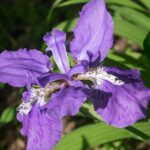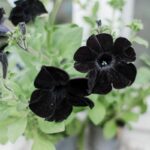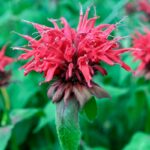Wildflowers can be found in lots of places across the United States, and you’re certain to spot some beautiful green wildflowers scattered throughout the country.
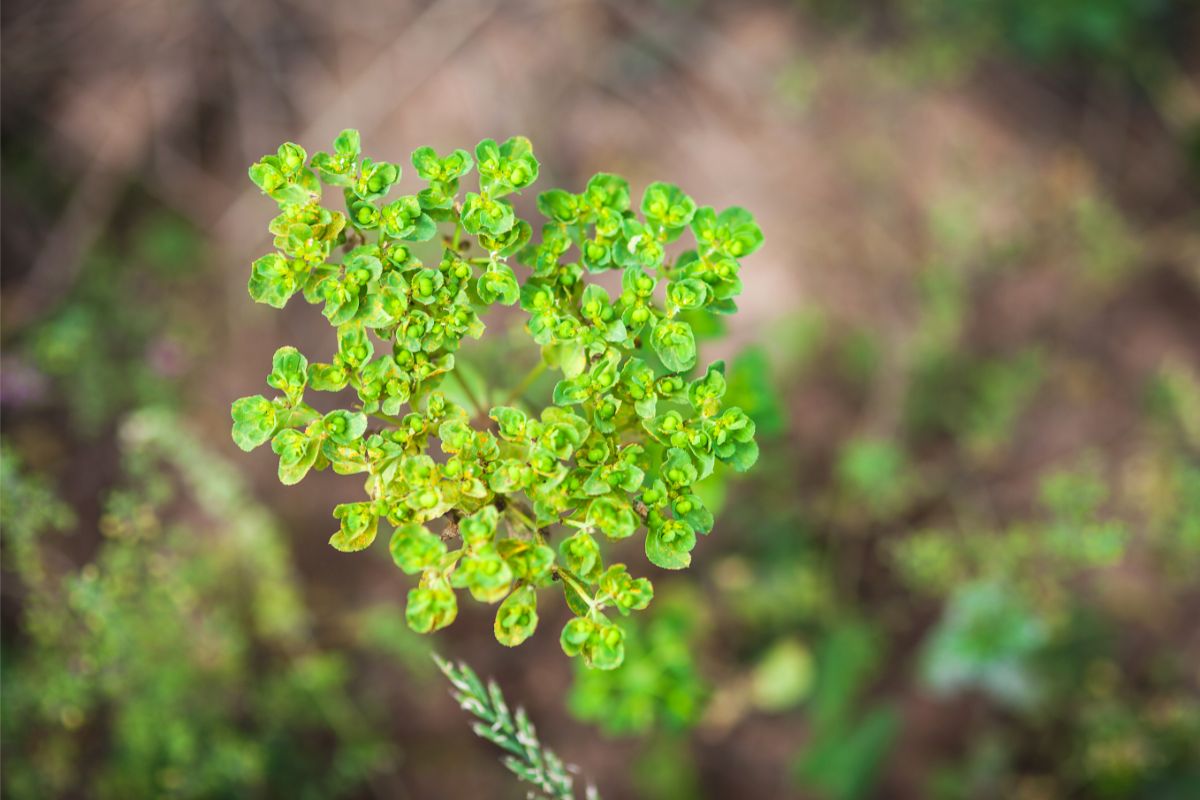
While green is often associated with plant life, it is not necessarily the first color that comes to mind when you think of flowers.
For this reason, green wildflowers are eye-catching and intriguing, and you’re bound to want to know some details about each one!
Identifying these wildflowers can be quite difficult, and that is where this list comes in! If you’re having trouble figuring out which wildflower you are looking at, you are sure to find the answer here!
We’ve compiled a list of 25 different types of green wildflowers that are commonly seen in the US. Use this list whenever you spot a wildflower that you hope to identify. Let’s dive in!
1. Green Violets
Green Violet flowers are very similar to lily-of-the-valley flowers. They have five green petals that hang downward. They are known as pendant blooms.
These flowers can often go unnoticed because they are very small and are situated close to the leaf.
Green Violets often grow in limestone soils in very moist ground. They are commonly found in woods. This plant emerges in Spring and flowers in early Summer.
This plant is made up of small green flowers, hairy stems, and elliptical leaves. They grow up to 6 inches in length.
2. Adder’s Mouth Orchid
The Green Adder’s Mouth, also known as Malaxis Unifolia, is found across the United States. It is a fairly small plant that is no taller than 50cm. It produces one or two glossy leaves on its stem, and up to 160 small green flowers. The flowers have three petals.
This plant flowers in Spring and early Summer in the North of the US, and it blooms later in the fall in the South. It usually blooms in swamps and bogs, but it can also be found in woodlands and forests.
3. Filmy Angelica
The Filmy Angelica is commonly found in woods and meadows in the central and southern Appalachian mountains. The plant is usually found at high elevations.
It is herbaceous, and it thrives in full sun or partial shade. The stem of this plant changes from green to purple as it ages. It can grow up to 6 feet high. The flowers on this plant will bloom between August and September, and they are mostly found in North Carolina.
This plant causes bees, hornets, and other insects that consume its nectar to appear intoxicated, so it is thought that this plant is poisonous. It can also cause blisters if it is touched.
4. Caulophyllum Thalictroides
This is a flowering plant that produces blue berry-like fruits and blue-green foliage. This plant consists of a single stalk rising from the ground and it produces a large leaf that has three branches.
This plant is found in forests and on hillsides in shady locations and on rich soils. The Blue Cohosh is found in lots of different areas of North America, including Oklahoma (Also check out Common Types Of Oklahoma Wildflowers) and Manitoba.
5. Cyperus Strigosus
This is a wildflower that is found on pond shores and in ditches. It is a species of sedge that is native to the United States, Canada, and Cuba. It grows in wet areas, as well as disturbed and cultivated areas.
You will often find this species in crop fields and on roadsides. This plant is sometimes considered an agricultural weed, and it is very common to spot.
6. Green Wood Orchid
These plants can grow up to 16 inches tall and they are one of the smallest species of their kind in North America.
This plant has no branches, but the stem produces up to 20 flowers. These flowers are very small, green flowers that are difficult to spot. They can also be white or yellow.
These plants bloom in mid to late summer and they grow well in acidic and moist soil. You will find the Green Wood Orchid in meadows, bogs, and swamps.
In the United States, the plant has been recorded in 34 different states, and it has been recorded in 6 states in Canada.
7. Pale Gentian
The Pale Gentian is a herbaceous plant that has been used medicinally by Native American Tribes. It can reach up to two feet in height, and the leaves are dark green and shiny.
The flowers of the plant are found at the terminal bud of the plant. They are pollinated by insects that are attracted to the nectar.
This plant produces fruit between October and November. It is found in open woodland and pine barrens. You will find this plant in 18 states along the East coast of the US.
8. Cinnamon Fern
The Cinnamon Fern is native to the Americas and eastern Asia. It is often found in bogs, swamps, and moist woodlands. A fossil of this plant has been found that dates back over 70 million years ago. This makes it one of the oldest living plant species out there.
It has been used by Native Americans as a food source and for medicinal purposes. It is often used as a cold remedy.
9. Arisaema Quinatum
This wildflower, nicknamed Jack-In-The-Pulpit, has has 5 leaflets. All of the other species of this kind have 3. This plant is found across North America, but it is mostly found in Southeastern states.
10. Winged Sumac
Winged Sumac is a tall plant that forms clusters of berries that are present throughout the winter. This plant thrives on dry soils, and it is full of tannins. The leaves and bark of this plant have been used in the tanning industry.
This plant is often found in meadows and fields, woodlands, and on forest edges.
11. Green Trillium
This is a beautiful plant that has silver-clouded leaves. It blooms early in the season, and it grows very strong stems that are infused with reddish-purple at the base.
Above these leaves sits a flower that is both red and green. This wildflower grows in nutrient-rich soil and it thrives in partial shade.
12. Canada Wild Ginger
This plant is found throughout eastern North America. It is also found in Canada. It is a protected plant in Maine because it is a threatened species.
The leaves on this plant are kidney-shaped and persistent. The roots are very shallow growing and the flowers on this plant bloom between April and June.
The flowers are green to purple, and they are lighter on the inside. The pollinated flowers develop into a pod that will split open when ripe to reveal the seeds.
This plant contains a toxic substance that can cause kidney damage when consumed. It is also linked to certain types of cancer.
13. Strawberry Bush
The Strawberry Bush is also known as the Euonymus Americanus. It is a species of flowering plant that is native to the United States. It is also a deciduous shrub that grows up to 2 meters tall.
The leaves on this shrub are leathery and the sepals are yellow-green.
The petals are also green, and the plant produces some red fruits. The seeds of this plant are dispersed by animals, and deer are attracted to this plant as they love its tender leaves and stems.
The berries are a strong laxative to humans and they can cause severe diarrhea.
14. Lindera Benzoin
This wildflower is commonly known as Spicebush. It is found in eastern North America, ranging from Maine to New York. It is also found in Florida. This plant will grow in moist woods, especially those with limestone soil.
The Spicebush is very aromatic when it is crushed, as it has a spicy, citrusy smell. The leaves are dark green, and in the fall they turn very bright yellow.
This plant has yellow flowers and green leaves. The flowers appear in clusters in early spring. The plant also produces a red fruit that is often consumed by birds.
15. English Plantain
The English Plantain is a flowering plant that is known as an agricultural weed. The plant is characterized by leafless and hairless stems that produce flowers. The flowers are green and small, only measuring around 4 millimeters.
This wildflower is present in the Americas and Australia. It is native to Eurasia, but it was introduced to North America and other parts of the world because of the suitable habitats.
16. Mercury Spurge
The Mercury Spurge is also known as the Euphorbia Mercurialina. It is native to the Southeastern United States and is commonly found in places like Alabama and Tennessee.
This plant flowers and fruits during the spring, and it is most commonly found in rich forests over calcareous rock.
17. Hairy Shadow Witch
The Hairy Shadow Witch is also known as the Ponthieva Racemosa. It has a limited distribution in the United States, only ranging from Texas to Virginia. It produces somewhat glossy leaves which remain green throughout the winter months.
When this plant is blooming in the early fall and winter months, it produces up to 35 green flowers.
This plant can be found in moist and shaded environments such as forests and swamps, however it is vulnerable in the US. This orchid is pollinated by insects and bees.
18. Thimbleweed
The Thimbleweed is part of the buttercup family. It is an upright species of flowering plant that grows to around 30-80 centimeters tall. This plant will flower from May through July, and it produces greenish-white flowers.
When these plants have flowered, they produce fruits called achenes. This plant is usually found in dry woods, and it is very common. It is durable in lots of different weather conditions and can be found in 38 out of 50 of the states in the United States.
This plant gets its name from the shape of its pistil which resembles the shape of a thimble.
19. Bur Cucumber
The Bur Cucumber, also known as the star-cucumber, is a wildflower that is native to North America. The flowers on this plant are green, and the fruits form in very small clusters. The fruits are green at first but will brown over time.
This plant produces a vine that has long stems. These stems can climb over shrubs and fences, or trail across the ground! The plant has separate male and female blooms, which look slightly different from each other.
20. Rattlesnake Master
The Rattlesnake Master is a herb that belongs to the parsley family. It is native to central and eastern North America. It is named the Rattlesnake Master because the plant was believed to be an antidote for rattlesnake venom by Early Native Americans.
The leaves on this plant are stiff and narrow, and they are a blue-green color. The stem produces a ball-shaped mass of flowers at the top which has green-white petals.
The flowers on this plant bloom in July and August, and when the flower buds open, the pollen is released.
21. Puttyroot Orchid
The Putty Root Orchid is found across the US and Canada. The leaves on this plant stay green throughout the winter months. This orchid is usually found near sugar maples and beeches.
22. Bluebeard Lily
The Bluebeard Lily is a species of flowering plant that belongs to the lily family. It has small blue fruit and little green-yellow flowers.
23. Illinois Bundleflower
The Illanois Bundleflower is also known as the Desmanthus illinoensis. It is found in the Midwestern and Southern United States and it is often found growing on roadsides.
24. Ground Cedar
This plant gets its name because it resembles cedar. It is glossy and evergreen and is often sold as Christmas greenery.
25. Yellow Fairy Bells
Yellow Fairy Bells are native to the Great Smoky Mountains. They are also found in lots of other places in the US.
Final Thoughts
You should now have a list of 25 types of green wildflowers! These flowers are all very beautiful and individual, and if you’re hoping to identify them, this list should give you a helping hand.
- Interesting Flowers That Start With A - July 21, 2023
- Interesting Flowers Beginning With H - July 21, 2023
- 14 Fascinating Flowers That Begin With C - July 20, 2023



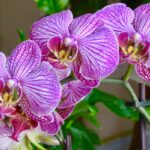
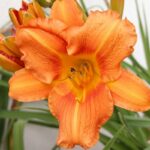

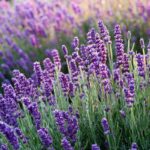
![How To Save Zinnia Seeds [Harvesting And Storage] How To Save Zinnia Seeds [Harvesting And Storage]](https://michwildflowers.com/wp-content/uploads/2023/05/How-To-Save-Zinnia-Seeds-Harvesting-And-Storage-150x150.jpg)
